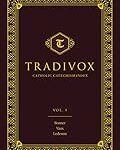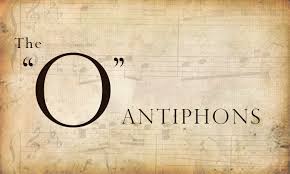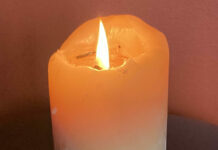Abstract
Are you an “investigator” or maybe a “peacemaker’ or someone who would be known as a “helper” or “achiever?” Maybe you are the enthusiastic lover of excitements or an individualist. Many of us want to know who we are and, ideally, have a simple method to get to the answer of who we are and get to the label that defines who I am. The Enneagram is said to be a spiritual practice that offers insight into matters such as these. Should I try it? (1)
Introduction
Personality tests have become commonplace in personal and professional growth applications to help individuals better understand and relate with “others on other’s terms.” (2) Such understanding of ourselves as well as of others can lead to better, and thus more productive relationships. It also teaches us that for one to have their message effectively received, it is best delivered in the mode that the intended wants to receive it.
Historically, the method of choice was the Myers-Briggs tool that was derived from the work of Swiss psychiatrist Carl Jung. (2) Yet, even this tool has many detractors. (4,5) With the popularity of the Myer-Briggs assessment, other tools became widely available such as Big Five, Predictive Index (PI), Traitify, DISC, Adaptive Resilience Factor Inventory and the Mayer-Salovey-Caruso EI test.
Yet, in spiritual direction applications, the Enneagram is seemingly the most popular. This tool is not used as much in business for it can be too complex in terms of layers and combinations for a work environment. The Enneagram goes further than many personality assessments to assess submerged desires and hidden motivations and name the activities that are most life-giving to different individuals. Hurley and Dobson go so far as to point out that the tool helps us be “aware of the aspects of our personalities that we must surrender to God.” (5) They use the Enneagram to focus on the “Enneagram of Personality Types” and the “Enneagram of Transformation.” In this latter application, the tool moves away from traditional personality assessment to a “spiritual wisdom” of the “Three Centers” of the human soul. (5).
So, What is the Enneagram?
The history of the Enneagram tool is complex. Proponents generally agree that it has its origin in Babylonian/Middle Eastern traditions and the Sufis elaborated upon this oral tradition. (2,6-8) The basic elements were put together by South American philosopher Oscar Ichazo. Later versions were adapted by philosopher G.I. Gurdjieff, psychiatrists C. Naranjo and J. Lilly and counselors H. Palmer, D.R. Riso and R. Hudson. (2,6-8) Its popularity in pastoral settings comes mostly through the work of Richard Rohr and its earlier use in Jesuit and Franciscan spiritual direction. (6)
The Enneagram itself is a symbol, a nine pointed image with the numbers one through nine arranged around the circumference of the circle. (Figure 1) The points designate people into nine distinct personality types, each characterized by its own “particular and unique existential dilemma – the core issue at stake for its own spiritual growth and development.” (6) While Myers-Briggs type systems base their classification on specific personality characteristics according to behavior and temperament, the fusion synthesis of ancient “wisdom traditions” informs the Enneagram to instruct and prescribe change. (6)
The nine personality types of the Enneagram note the default basic personality types. People tend to lead with one type that does not change with time. (Table 1) The names for each point can vary with different authors, but the characteristics remain basically the same. However, characteristics of all types are demonstrated in differing periods and environmental influences throughout life.
In the Enneagram test, the person falls into one of these nine types. Consequently, there are only nine types of personalities. There are a number of different labels for the different numbers depending on the source of the material one is using. For example, Type 5 could be called the “Investigator” in one program and “the “Thinker” in another. However, Enneagram programs are consistent in the idea is that the type looks into information.
Enneagram Type 4 is called the Individualist, the Artist, and the Romantic because of their focus on individuality, authenticity, and full expression of their emotions. Type 4 always has the instinct to look for beauty or for patterns or images but also a person who likes to process information from an emotional center. This person is motivated through evaluation of social relationships. Alternatively, the “Head” or thinking triad are types whose core emotion is fear. It consists of types five, six and seven who want to understand the world as representative, the artist might be sentimental or romantic or feel nostalgia more intensely than others. This triad has the instinct to look for beauty or for patterns or images but also always wants to understand the world as representative. This person might be sentimental or romantic or feel nostalgia more intensely than others. This is subject to the theory’s allowance that an individual likely has one or more “wing” attributes from the adjacent number. Thus, #5 – The Investigator could also possess the attributes or the deficits of the adjoining #4 – The Individualist or #6 – The Loyalist.
Other readings of the Enneagram divide the nine types into three “triads:” The Heart, the Head and the Gut. (7) The Heart triad consists of types two, three and four who like to process information from an emotional center and are motivated through evaluation of social relationships. The “Gut”, or body triad, consists of types eight, nine and one who instinctively responds to the environment. They are motivated in seeing that life is a battle to be won.
Purported Benefits of the Enneagram
In the author’s experience with the Enneagram, there are three primary benefits put forward for its use: self-awareness, motivation and growth. First, personality testing enables a simple awakening to the fact that not everyone thinks the same way. Programs like these formally introduce us to the notion people experience the world in different manners and not only as how we gather the data but that there is no “right or wrong” to each one’s preferred style. Especially depending on one’s style, what seems like a common-sense assertion can be an epiphany in considering the possibility the other eight points in the Enneagram confront the world with different initial inclinations. The motivation for business and personal communications is to speak to the others’ style.
The second benefit of personality testing is focusing on our default motivations, along with their associated base and underlying fears. For example, a Type 5 person in the Enneagram may view the world is a potentially dangerous place, either physically or psychologically dangerous. To protect oneself, the Type 5 person feels the need to be prepared. This may entail studying what is going on and getting ready to respond to those threats or by having an understanding of the inner workings of what is happening and what is the potential consequence. The Type 5 person may not necessarily have great genius or intellect, but simply follow such a style in protecting himself. Perhaps this type needs to consider what they really want and whether they are naturally avert from other types: perhaps they are like a Type 4 person whose heart might ache to recover a beauty they once experienced. Or, unlike the Type 4, perhaps the Type 5 may initially miss the beauty that lies before them.
The third benefit is recognizing paths for growth and discord. Each Enneagram point “type” is directed toward another number. (2,5) Enneagram Type 5 points to Type 8 – the Challenger/Leader. Thus, for growth, the Type 5 may go to a leadership role.
The Type 5 who has studied and reflected upon the world needs to be motivated to use share knowledge. Even if not as the leader, but certainly as a contributor. Contrary to this movement, the Type 5 should look to avoid contrary direction by descending to a Type 7 – The Enthusiast. In fear, the Type 5 may descend to become one who is fascinated by everything. Such movement could descend into an endless, aimless study of everything. The Type 5 would at best become a jack-of-all-trades and certainly master of none. He would dissipate his focus, and never move forward.
Discernment of the direction of growth and integration as well as contrary disintegration is important but adds to the complexity of the Enneagram.
Enneagram Use in Spiritual Direction
Modernism in the Church includes the heresy of promoting all religions as equal and that dogma should evolve with culture. Gnosticism in the Church is the heresy of having special knowledge or knowing more than the Church in doctrine. Sadly, both seem to be rampant in Catholic spiritual direction.
In the author’s experience, Catholic spiritual direction can be particularly gnostic in its common portrayal as being the proper approach in spirituality relating to the workings of the Holy Spirit. While certainly Catholic spiritual direction can be a more focused promotion of looking for the workings of the Holy Spirit in one’s life, such focus is not a missing or lost teaching of the Church.
Many spiritual direction programs promote using the Enneagram to introduce teachings on the soul that are certainly modernist in nature. Proponents of the Enneagram teach that the three types relate to facilities of the soul:
The soul contains all the lessons learned in life, but to put these life lessons to use it must be freed from the hypnotic effect of the world’s cares and anxieties. The Enneagram of Personality Type is a wise guide showing clearly which of the nine specific ways we get hooked. Through the insights of the Enneagram of Transformations, this system also names and describes the Divine Image in which we have been created. Most important, the Enneagram shows how we can get from “out there” to “in here,” from false personality to soul. The Enneagram of Transformation shows us how to be in the world but not of it. (5)
Jesus said he came so that we may “have life and have it more abundantly.” (John 10:10) He didn’t say we needed an Enneagram for this. Yet, Hurley and Dobson go so far as to promote the following:
We believe that every person is created with three centers, each equal, balanced and ready to be developed so as to achieve its true purpose. This is part of what it means to be created in the image and likeness of God. The centers are the imprint of the Divine in every human being. The thinking center contains the imprint of the Spirit, source of inspiration and consciousness. The feeling center contains the imprint of the Healer, source of incarnation and mediation, The doing center holds the imprint of the Father-Mother, source of creation and fulfillment. (5)
So how does one grow in grace? Should one follow the Enneagram or, would one do better to study the saints, receive the sacraments and engage in spiritual direction? Who is it doing the redeeming if not Christ who redeems me? The Enneagram leaves no role for the blood of Christ in moving us forward. Our faith shows us the way, without the distractions of personality tools. Prayer and discernment in seeking union with God ought to lead to the fullness of life that he desires for each of us. We humble ourselves before God, not claiming “co-creation with God of ourselves and this world.” (5)
Catholic Challenge to the Enneagram
Personality tests are fun and provide insight in self-awareness; so, what is the evil?
The “evil” is that the Enneagram presents a modernist, gnostic view of Church teachings. The Church has spoken out again the Enneagram formally by the Pontifical Council for Culture and Pontifical Council for Interreligious Dialog (9) and informally in a draft from the United States Conference for Catholic Bishops that has not been formally issued but, is readily available online (10). In Jesus Christ: Bearer of the Water of Life, the teaching clearly states that the Enneagram introduces “ambiguity in the doctrine and the life of the Christian faith. (9) The gnostic teachings, such as found in the Enneagram assume “the characteristics of a religion or a para-religion in distinct, if not declared, conflict with all that is essentially Christian. (9)
The USCCB draft on the Enneagram disputes the scientific foundation of this tool and warns Christians that it not only has its origins in a non-Christian worldview, the Enneagram is a mix of philosophical and religious ideas that veer away from Christian belief. Oftentimes, when challenged that the Enneagram has been used for spiritual formation, the proponents cite approval from leading Catholic authors. While notable, such authors do not speak with the authority of doctrine.
Alternatives to the Enneagram
Personality tests generally lead practitioners to a similar conclusion for the tendencies behind our actions. Tests such as Myers-Briggs help us identify our strengths and weaknesses. However, the Enneagram “tempts to lead us to find excuses for our sins and justify our faults, by ascribing our motivations to unavoidable psychological tendencies.” (11) Enneagram, as with herbal medicine, can offer a positive feeling through use of this tool while potentially masking harmful side effects.
The goal in using personality testing in spiritual formation is personal discernment. For example, the author of “Type 8” upon learning from his Enneagram profile may first feel insulted to learn that his “capacity to gain and use power to bring about positive change” came with a dilemma of “self-defined justice with arrogance. (6) Yet, his core spiritual dilemma was not “control” or “power” but asking himself, “Why am I often so angry when I am so blessed?” Perhaps, using a different Enneagram tool could have identified this “anger” directly. (8) Instead, this person felt judged.
It was only through discerning this dilemma in spiritual direction, that this person found the true cause of his anger. His anger was not a true harm, but a bruising of his ego. It was only through an accompanying discernment on humility did this person learn not only the source of his emotion, but how to situationally discern whether the source was “real” injustice or simply an emotional response. In this spirituality, the author gained understanding and through humility the freedom to dismiss such emotions as inconsequential to following Christ.
Oftentimes, those of us facing a spiritual or emotional crisis come to realize that the person we think we are and the one that the world sees are out of alignment. Personality tests are unique in helping us to confront our default personas. There is nothing modernistic or gnostic in regard to using the tools of human psychology. However, the tools we choose for diagnosing these misalignments matter.
True Self-Knowledge
In discernment, we need to rise above simple rote prayer, not diminishing its importance, to offer our whole self to God. He already knows our strengths and our weaknesses. He knows our sin. Intellectually, we know that he still loves us. We need to trust this in our hearts as well.
St. Teresa of Avila taught that our search for self-knowledge is a continual process of self-discovery. Fr. Joseph Schmidt, FSC reminds us that the self-knowledge that St. Teresa taught was not referring to the “self-knowledge that we can learn today from psychological tests.” (12) Self-knowledge in the Catholic tradition comes from prayerful discernment of who we are, how God sees us, and ultimately working towards a surrendering to the divine will of God. This comes through prayerful reflection of our experiences and not comparative results from psychological testing. Psychological tests, however, do help us face any delusions we may have between a false notion of who we are inwardly, and the person we present to the world.
Too often we diminish this open and honest reflection experience with judging of our experiences. We label our experiences as being positive or negative. This leads to seeing our experiences in terms of our egos and the emotions that these experiences conjure up within us. Giving in to these emotions becomes a lost opportunity for discerning these experiences as leading to a true self-knowledge of who we are and how we react. Instead, we focus on an ego-centric false-self; where pride, pity and blame come to the center of our reflections while diminishing the activity as a faithful reflection of the true experience. This is analogous to “pointing the finger” outward rather than inward at us.
True self-knowledge makes us aware of our giftedness and brokenness. Honest discernment is open to our ego, our worldly desires, our fleshly desires, etc. This evil in us must be acknowledged before we can choose another path. Rather than hiding from our brokenness, we must trust in it as part of offering our whole selves to God. We cannot forget that God already knows who we are. We need to acknowledge who we are to ourselves. From St. Therese of Lisieux:
“You are mistaken,” she wrote, “if you believe that our Little Therese walks always with fever on the road of virtue. She is weak and very weak;… Jesus is pleased to teach her, as He taught St. Paul, the science of rejoicing in her infirmities. This is a great grace, and I beg Jesus to teach it to you, for peace and quiet of heart are to be found there only.” (12)
Self-knowledge is awareness of our joy, our evil and our trust in God’s healing and authority. It is an acceptance of God’s love and an openness to journey towards a true relationship with Him in faith. This journey entails offering our whole selves in prayer, not simply “rational analysis or by manipulation of the data of our experience that understanding and peace will come.” (12)
Conclusion
Christians who are looking for an aid for spiritual growth should be aware that the Enneagram has its origins in a non-Christian worldview and remains connected to a complex of philosophical and religious ideas that do not accord with Christian belief. By portraying the Enneagram as foundational to our soul simply leads the practitioner away from the teachings of our faith. Our souls are not “co-created” as promoted by programs such as the Enneagram, but given at conception as the gift of life given solely by God.
The USCCB draft states this clearly:
The attempt to make use of the Enneagram also shares the principal difficulty involved in adapting any non-Christian wisdom, whether psychological, philosophical, or religious, within a Christian framework — that of making sure that this doctrine does not become the criterion by which Christian beliefs will be judged. The ever-present temptation is to conform Christian belief to the doctrine, as if it were an absolute norm. Unfortunately, at least in the Enneagram literature that has been published so far, distortions of Christian belief are common, even in the books that are most popular among Catholics and that are sometimes written by members of religious orders. Even if some of these authors do not appear to be acting out of a deliberate strategy to reinterpret Christianity in a way that is incompatible with traditional Catholic beliefs, their writings nevertheless often distort Christian beliefs in a way that makes them conform to Enneagram doctrine. (10)
References
- Based on Hudzik, R.F. “Is the Enneagram Valid? Is it Catholic?”, https://www.youtube.com/watch?v=X-coYhggzY0. Accessed 5 Jan 2023. Used with permission.
- Bland, A.M. “The Enneagram: A Review of the Empirical and Transformational Literature,” The Journal of Humanistic Counseling, Education and Development, 2010, 49(1), 16-31. DOI: 10.1002/j.2161-1939.2010.tb00084.x
- Murray, J. B. “Review of Research on the Myers-Briggs Type Indicator,” Perceptual and Motor Skills, 1990, 70(3_suppl), 1187–1202. DOI: 10.2466/pms.1990.70.3c.1187
- Stein, R.; Swan, A.B. “Evaluating the validity of Myers-Briggs Type Indicator theory: A teaching tool and window into intuitive psychology,” Soc Personal Psychol Compass, 2019; 13:e12434. DOI: 10.1111/spc3.12434
- Hurley, K.V.; Dobson, T.E. “The Enneagram in Spiritual Direction,” Presence: the Journal of Spiritual Directors International, 1998, 4(2), 44-54.
- Stalfa, F.J. “The Pastoral Care of Sin: The Enneagram in Pastoral Care and Counseling,” J. of Pastoral Care, 1994, 48(1), 65-73.
- Hook, J.N.; Hall, T.W.; Davis, D.E.; Van Tongeren, D.R.; Conner, M. “The Enneagram: A systematic review of the literature and directions for future research,” J. Clin Psycol. 2021, 77(4), 865-883. DOI: 10.1002/jclp.23097
- Alexander, M. Schnipke, B. “The Enneagram: A Primer for Psychiatry Residents,” The American Journal of Psychiatry Resident’s Journal, 2020, 15(3), 2-5. DOI: 10.1176/appi.ajp-rj.2020.150301
- Catholic Church, “Jesus Christ Bearer of the Water of life: A Christian reflection on the “New Age,” Pontifical Council for Culture and Pontifical Council for Interreligious Dialog, 2003. https://www.vatican.va/roman_curia/pontifical_councils/interelg/documents/rc_pc_interelg_doc_20030203_new-age_en.html , accessed 28 Dec 2022.
- National Catholic Reporter, U.S. Council of Catholic Bishops, “A Brief Report on the Origins of the Enneagram – Draft from the U.S. bishops’ Secretariat for Doctrine and Pastoral Practices,” 2000. http://www.natcath.org/NCR_Online/documents/ennea2.htm, accessed 28 Dec 2022.
- Martin, R.W. “Why Catholics should avoid the Enneagram,” 2021, https://www.catholicmom.com/articles/why-catholics-should-avoid-the-enneagram-trend, accessed 28 Dec 2022.
- Schmidt, J.F., Praying Our Experiences, 2008, Frederick, MD: The Word Among Us Press.,
About the Author
Gregory Webster is a permanent deacon in the Archdiocese of Chicago and coordinates his activities through Brother in the Stole Ministries. Besides degrees in science and management, he holds an M.A. in Theology from Holy Apostles College and Seminary and a D. Bioethics degree in Catholic and Research Bioethics from Loyal University of Chicago. Dcn. Greg has a certificate in Ignatian Spiritual Direction from Fairfield University and a certification as a Supervisor for Spiritual Directors from the Institute for Spiritual Guidance at the Sienna Retreat Center. Greg can be reached at brotherinthestole@gmail.com.
The views expressed in this manuscript are solely those of the author.
Figure 1: The Structure of the Enneagram

Table 1. Enneagram Personality Types (from Ref. 1)
| Point | Type | Core Dilemma |
| 1 | The Paragon | “I Must Be Perfect” |
| 2 | The Helper | “I Must Help Others” |
| 3 | The Achiever | “I Must Keep Busy” |
| 4 | The Individualist | “I Need to be Different” |
| 5 | The Investigator | “I Need to Know More” |
| 6 | The Guardian | “I Must Feel Safe” |
| 7 | The Enthusiast | “I Need to Find Adventure” |
| 8 | The Challenger | “I Need to Be Strong” |
| 9 | The Peacemaker | “I Must Be Agreeable” |











